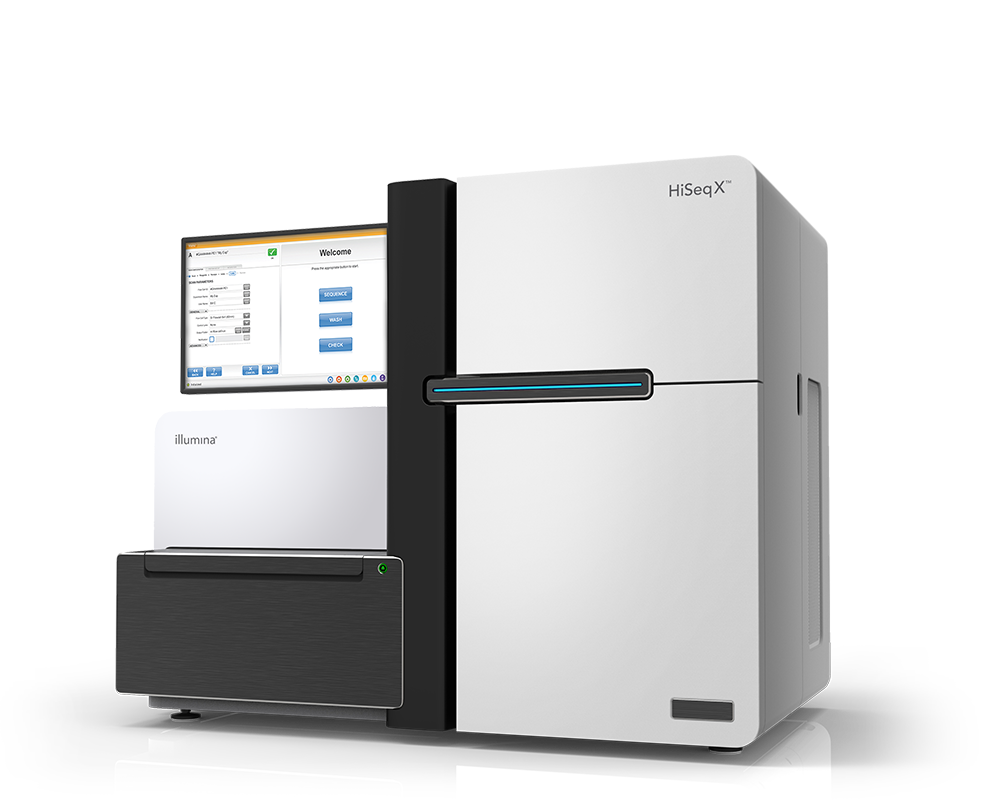HiSeq X Training
-
Library Preparation
DATE/
LENGTH -
TruSeq: Nano DNA Library Prep
After completing this course, you will know: what the TruSeq Nano DNA Library Protocol is, what the protocol does, how the protocol works, what is needed to successfully complete the protocol, and the various steps in the sample prep workflow.
20 min
-
Instrument & Software
DATE/
LENGTH -
Discover the Benefits of Illumina Proactive
Learn about the benefits of instrument performance monitoring through Illumina Proactive, a service in which instrument performance data are sent to Illumina to enable proactive maintenance.
10 min
-
ExAmp Cluster Amplification Workflow
This course discusses the purpose of ExAmp cluster amplification, lists the steps in the ExAmp cluster amplification workflow, and provides best practices for preparing the ExAmp reaction.
20 min
-
HiSeq Expert Video Tips Part 1: Sequencing Primers
This video discusses how to choose the appropriate sequencing primers for your run. Since commonly used Illumina indexes, TruSeq™ and Nextera™, utilize different index primer site sequences, it's important that the correct primer is loaded into the HiSeq for sequencing.
3 min
-
HiSeq Expert Video Tips Part 2: Instrument Computer Tips
This video offers tips and troubleshooting advice related to the HiSeq Instrument computer, including navigating the instrument's Port Manager, formatting hard drives, and setting up a second run.
7 min
-
HiSeq Expert Video Tips Part 3: Mechanical System, Thermal System, and Maintenance Best Practices
This video offers tips on the mechanical and thermal systems of the HiSeq, as well as best practices on maintaining your instrument.
7 min
-
HiSeq Expert Video Tips Part 4: Tips for Proper Fluidics Flow
This video introduces the fluidics system. Topics include fluidics leaks, syringe pump function, and priming the HiSeq 2500 template loading station.
9 min
-
HiSeq Expert Video Tips Part 5: Removing Fluidic Line Blockages
This video continues to share tips and tricks for the fluidics system started in Part 4 of the series. The video focuses on how to identify and remove blockages from the fluidics lines to ensure the HiSeq instrument is used at its highest capacity.
7 min
-
IT Requirements for Implementing Illumina Proactive
This video shares IT requirements for implementing Illumina Proactive, an instrument performance monitoring service provided by Illumina that can increase instrument uptime, improve operational efficiency, and reduce the risk of lost resources.
4 min
-
Data Analysis
DATE/
LENGTH -
BaseSpace Sequence Hub: Introduction and Analysis Overview
Recorded Webinar (May 2020) | llumina Technical Support invites you to learn about BaseSpace, Illumina’s cloud-based sequencing data analysis solution. In this presentation, we will discuss how to navigate the BaseSpace dashboard, general BaseSpace functionally, and tips and tricks for successful application and workflow utilization. We will cover the following topics: How to upload/view data in BaseSpace, discussion of major analysis workflows, general overview of how to analyze data on BaseSpace.
Please note: BaseMount and BaseSpace CLI are alpha software releases; features and functionality may change over time, and support is directly through Illumina software development.
-
How Can I Tell If I Sequenced Through the Insert? Part 1
An Illumina Field Applications Scientist describes what it means to sequence through the insert of your prepared library. We look at Bioanalyzer traces to assess the range of insert sizes in a library.
7 min
-
How Can I Tell If I Sequenced Through the Insert? Part 2
This video shows you how to use Sequencing Analysis Viewer (SAV) plots to determine if your sequencing insert is too short. We also explore how to use the adaptertrimming.txt file on the MiSeq to diagnose short inserts.
5 min
-
Is My HiSeq or MiSeq Run Overclustered?
This video provides an overview of overclustering and how it can impact your sequencing data. An Illumina Field Applications Scientist shows you how to use Sequencing Analysis Viewer (SAV) to look for common symptoms of an overclustered HiSeq or MiSeq flow cell.
7 min
